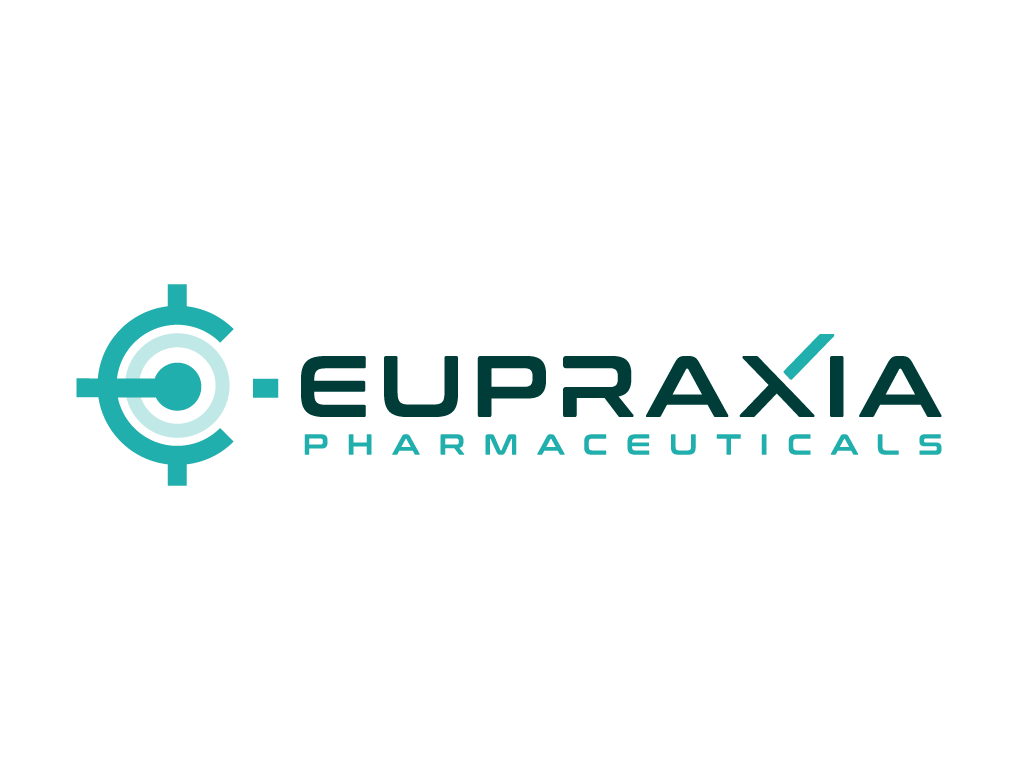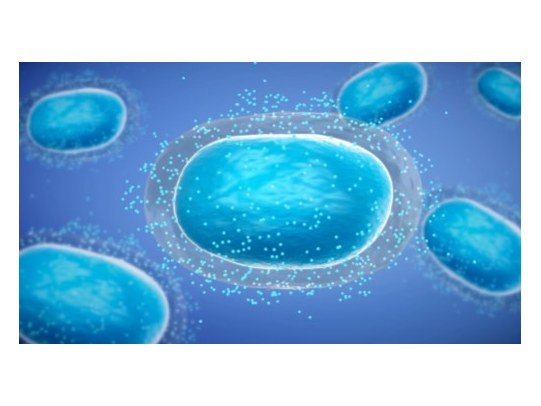Type of technology
Polymer-based particles
Administration route
Intra-articular, Intra-vitreal
Development state and regulatory approval
fluticasone
Phase II
FDA 505(b)(2) approval pathway
Description
Diffusphere is a polymer-based, long-acting injectable designed primarily for intra-articular administration. It consists of a polymeric shell encapsulating a crystalline drug core. The shell is immiscible with the API, protecting the drug core from the body's fluidic environment. Diffusphere can encapsulate more than one API when the core microparticles are heated between 210°C and 230°C. It offers a controlled release profile, delivering the drug over a period of 2 to 12 months while maintaining therapeutic concentrations at the target site.
Developer(s)

Eupraxia Pharmaceuticals, founded in 2012, is a Canadian clinical-stage biotechnology company. It focuses on developing innovative, long-lasting treatments for chronic pain and other indications. Its research facility is located in Victoria, British Columbia, Canada, where it advances its pipeline with a proprietary drug delivery platform targeting sustained therapeutic effects in the orthopaedics
Technology highlight
1) No/ Low Initial burst release 2) Zero order/ pseudo-zero order kinetics (concentration gradient is maintained with a constant release of drug) 3) Biodegradable thermally cured polyvinyl alcohol (PVA) is used 4) Low systemic toxicity
Illustration(s)
Technology main components
1. Cross-linked polymeric shell (thickness in microns), such as poly(vinyl alcohol) (PVA), poly(p-xylylene), poly(lactic acid) (PLA), poly(lactic-co-glycolic acid) (PLGA), poly(ε-caprolactone) (PVL), poly(p-dioxanone) (PDS), poly(hydroxyvalerate) (PHV), poly(hydroxybutyrate) (PHB), and poly(malic acid) (PMLA), incorporating cross-linking groups like vinyl, allyl, acrylate, cinnamate, diacrylate, or oligoacrylate. The polymeric shell (2-10% w/w of polymeric shell) typically has a thickness measured in microns. 2. Crystalline API core, composed of a pharmaceutically acceptable salt or ester, which may exist either as a single large crystal or as multiple smaller crystals.
Not provided
Delivery device(s)
No delivery device
APIs compatibility profile
Diffusphere focuses on developing corticosteroids, including different salt forms of fluticasone, and aminoamide anesthetics like ropivacaine, articaine, and bupivacaine, among others. They also work with aminoester local anesthetics, such as procaine and benzocaine. Recently, Diffusphere has expanded its applications to disease-specific therapeutics, including oncology.
Not provided
Not provided
< 70 wt%
2 different APIs : API core to be heated at 210-250 °C
Max: 5
Fluticasone LogP = 3.2
Scale-up and manufacturing prospects
With a patent for manufacturing filed in 2019, the production facility is projected to achieve commercial-scale operations optimized for low cost of goods. Euphraxia has allocated a budget of 2.8 million Canadian dollars for the development of this manufacturing unit.
Not provided
Manufacturing (ISO 14644-1; Grade 8 cleanroom) involves: 1) Forming API microparticles (using any 1 method) a. Solvent Evaporation/ extraction techniques b. In-water drying technique c. Organic phase separation technique d. Air suspension technique e. Dip coating technique 2) Coating of the API core with the polymeric shell using the dip coating technique with Multifunctional multi-polymeric continuous composition spectrum surfactant 3) Microparticles are agitated with PVA polymer via stirring. 4) Vacuum filtration 5) Heated at 220 ºC for a period of at least 1 hour
1) The dissolution Test is performed using a US Pharmacopoeia Type II apparatus where the condition is standardized at 3mg of microparticles in 200 ml of dissolution medium (70% methanol + 30% water) at 25 °C. The dissolution rate of the microparticles is observed at 160° C, 190° C, 220° C, and 250° C. 2) PVA content analysis using NMR spectroscopy 3) Drug content analysis using NMR system - Bruker Spectrospin 300 MHz magnet , Bruker B - ACS 120 autosampler , Bruker Avance II 300 console , and a Bruker BBO 300 MHz Si 5 mm with Z gradient probe. 4) Praticle transfer efficiency measured by HPLC
Excipients
No proprietary excipient used
No novel excipient or existing excipient used
No residual solvent used
Additional features
- Biodegradable
- Drug-eluting
- Monolithic
- Room temperature storage
- At least 1 year shelf life
The drug is released at a constant rate following zero-order kinetics from the polymeric shell. Diffusphere has favorable PK parameters mainly because of the low/no initial burst. Clinical studies of EP104 showed that the plasma concentrations of fluticasone propionate (EP104) had a blunted initial peak with a terminal half-life of approximately 18–20 weeks.
Diffusphere is an Intra-articular via ultrasound-guided injectable formulation that requires a 22-25 gauge needle with a length of 1-1.5 inches.
Based on the pharmacokinetic clinical trials of EP104, 57% of the treatment population had one or more Treatment Emerging Adverse Events (TEAE), However, the effects on serum glucose and cortisol concentrations were minimal.
At least 2 years of proven stability at room temperature storage.
Diffusphere doesn't require cold chain storage or transport.
Therapeutic area(s)
- Other(s) : "Osteoarthritis, Esophagitis, post surgical infection and pain"
- Pain management
- Oncology
- Post-Exposure Prophylaxis (PEP)
- Treatment
Potential associated API(s)
- fluticasone
Use of technology
- Administered by a community health worker
- Administered by a nurse
- Administered by a specialty health worker
Monthly, Every 6 months, Yearly
Not provided
Targeted user groups
- Adults
- Older Adults
- All
Unspecified
Unspecified
No
Not provided
Anti Infective agent
Pre-clinical
Not provided
Post Surgical Infection
Not provided
Not provided
Not provided
Anesthetic agent
Pre-clinical
Not provided
Post -Surgical pain management
Not provided
Not provided
Not provided
Antineoplastic agent
Pre-clinical
Not provided
Not provided
Not provided
Not provided
Not provided
fluticasone
Corticosteriods
Phase II
NCT04120402
Knee Osteoarthritis
Males or females, aged ≥40 years
Single intra-articular injection - lasts up to 6 months
FDA 505(b)(2) approval pathway
Injectable sustained release composition and method of using the same for treating inflammation in joints and pain associated therewith
Described herein are injectable corticosteroid-loaded microparticles, pharmaceutical composition thereof and methods for reducing inflammation or pain in a body compartment such as a joint, an epidural space, a vitreous body of an eye, a surgically created space, or a space adjacent to an implant.
US9987233B2
Formulation composition
Eupraxia Pharmaceuticals USA LLC
Not provided
March 21, 2034
Active
Publications
Malone, A., Kowalski, M. M., Helliwell, J., Lynggaard Boll, S., Rovsing, H., Moriat, K., Castillo Mondragón, A., Li, Y., Prener Miller, C., Reinstrup Bihlet, A., Dobek, C., Peck, V., Wilmink, M., Simon, L. S., & Conaghan, P. G. (2024). Efficacy and safety of a diffusion-based extended-release fluticasone propionate intra-articular injection (EP-104IAR) in knee osteoarthritis (SPRINGBOARD): a 24-week, multicentre, randomised, double-blind, vehicle-controlled, phase 2 trial. The Lancet. Rheumatology, S2665-9913(24)00223-6. Advance online publication. https://doi.org/10.1016/S2665-9913(24)00223-6
Between Sept 10, 2021, and Nov 16, 2022, 1294 people were screened for eligibility, and 319 were randomly assigned to EP-104IAR (n=164) or vehicle control (n=155). One participant in the EP-104IAR group was excluded from all analyses because treatment was not administered due to an adverse event. 318 participants (135 [42%] male and 183 [58%] female, 315 [99%] White) received randomly assigned treatment and were included in the primary analysis and safety analysis (EP-104IAR, n=163; vehicle control, n=155). At week 12, least squares mean change in WOMAC pain score from baseline was -2·89 (95% CI -3·22 to -2·56) in the EP-104IAR group and -2·23 (-2·56 to -1·89) in the vehicle control group, with a between-group difference of -0·66 (-1·11 to -0·21; p=0·0044); a significant between-group difference persisted to week 14. 106 (65%) of 163 participants in the EP-104IAR group had one or more treatment-emergent adverse event compared with 89 (57%) of 155 participants in the vehicle control group. Effects on serum glucose and cortisol concentrations were minimal and transient. There were no treatment-emergent deaths or treatment-related serious adverse events. Plasma concentrations of fluticasone propionate showed a blunted initial peak with terminal half-life of approximately 18-20 weeks.
Malone, A., Helliwell, J., Kowalski, M., Rovsing, H., Boll, S. L., Moriat, K., ... & Conaghan, P. G. (2024). OP0247 EFFICACY OF A NOVEL LONG-ACTING FLUTICASONE PROPIONATE INTRA ARTICULAR INJECTION (EP-104IAR) IN KNEE OSTEOARTHRITIS: PER-PROTOCOL ANALYSIS OF A RANDOMISED, DOUBLE-BLIND, PHASE 2 TRIAL OF EP-104IAR VS VEHICLE PLACEBO (SPRINGBOARD).
Least-squares mean (LSM) change from baseline for WOMAC total score and subscales are shown in Figure 1. LSM change from baseline to Week 12 was significantly better for EP-104IAR vs vehicle for each of the WOMAC subscales: pain (-2.97 vs -2.24; p=0.003), function (-2.64 vs -1.99; p=0.005) and stiffness (-2.85 vs -2.05; p=0.001). Stiffness and function maintained p<0.05 to the Week 20 assessment and pain to Week 15. Total WOMAC score at Week 12 was significantly better for EP-104IAR vs vehicle (-2.79 vs -2.07; p=0.002) and this difference persisted with p<0.05 to the Week 20 assessment. The proportion of OMERACT-OARSI strict pain responders, defined as ≥50% decrease from baseline with absolute decrease ≥2 on the 10-point WOMAC pain scale was calculated for each week. The proportion of strict pain responders at Week 12 was 55.3% for EP-104IAR vs 39.5% for vehicle (p=0.013). This difference persisted with p<0.05 to the Week 15 assessment. The proportion of subjects with 70% reduction in pain score at Week 12 was 34.4% for EP-104IAR vs 14.6% for vehicle (p<0.001). This difference persisted with p<0.05 to the Week 21 assessment at all but one timepoint. The observed Cmax of FP in the full study population (n=163) was 90pg/mL with a terminal phase half-life of 18-20 weeks.
Helliwell, J., Malone, A., Bredenoord, A. J., Nguyen, N., Ko, H. H., Dobek, C., ... & Dellon, E. S. (2024). 265. INITIAL RESULTS FROM RESOLVE, A PHASE 1B DOSE-ESCALATION STUDY OF EP-104GI (EXTENDED-RELEASE FLUTICASONE PROPIONATE INTRA-ESOPHAGEAL INJECTION) FOR EOSINOPHILIC ESOPHAGITIS. Diseases of the Esophagus, 37(Supplement_1), doae057-044. https://doi.org/10.1093/dote/doae057.044
All subjects demonstrated decreased symptom scores compared to baseline, with generally greater responses at the higher EP-104GI dose in Cohort 2 (Fig 1). Histologically, all Cohort 2 patients showed decreases in EoEHSS scores with 2/3 having ≈50% decrease in total grade score and ≈35% decrease in total stage score at Week 4, also, eosinophil counts were reduced by ≈35% at Week 4 and ≈40% at Week 12.
Findings from Cohorts 1 and 2 of the ongoing trial include mild-moderate treatment-emergent AEs, the majority occurring on the day of treatment. No AEs were related to EP-104GI.
Additional documents
Useful links
There are no additional links
Collaborate for development
Consider on a case by case basis, collaborating on developing long acting products with potential significant public health impact, especially for low- and middle-income countries (LMICs), utilising the referred to long-acting technology
Share technical information for match-making assessment
Provide necessary technical information to a potential partner, under confidentiality agreement, to enable preliminary assessment of whether specific medicines of public health importance in LMICs might be compatible with the referred to long-acting technology to achieve a public health benefit
Work with MPP to expand access in LMICs
In the event that a product using the referred to long-acting technology is successfully developed, the technology IP holder(s) will work with the Medicines Patent Pool towards putting in place the most appropriate strategy for timely and affordable access in low and middle-income countries, including through licensing
Partnerships
No partner indicated
All sponsors
No sponsor indicated
